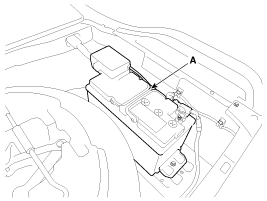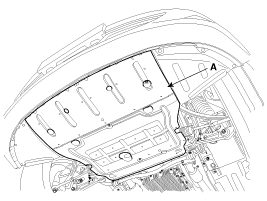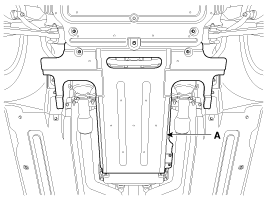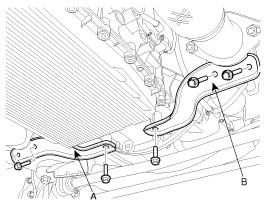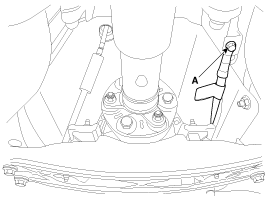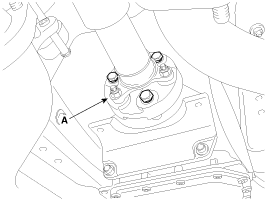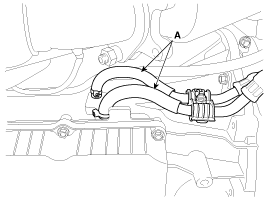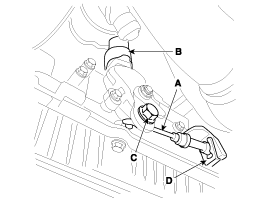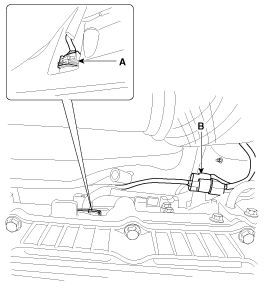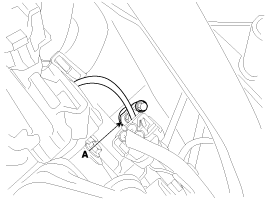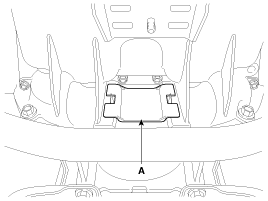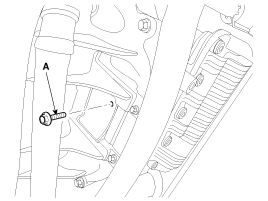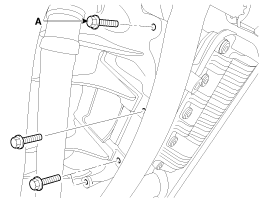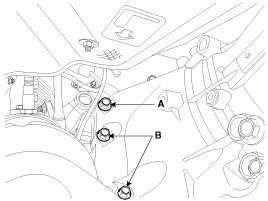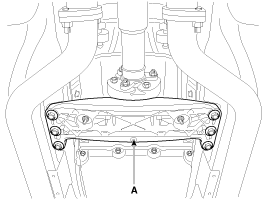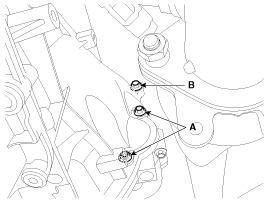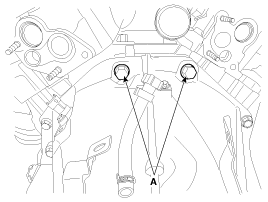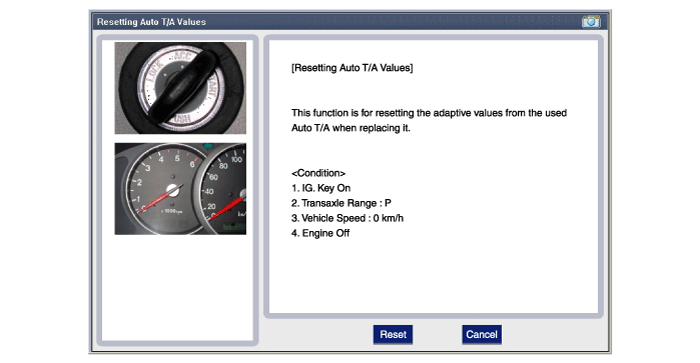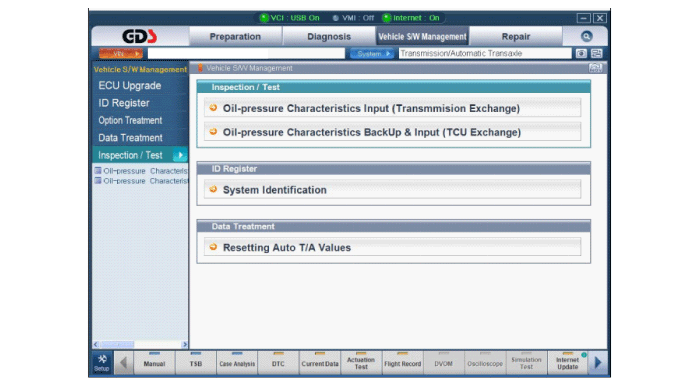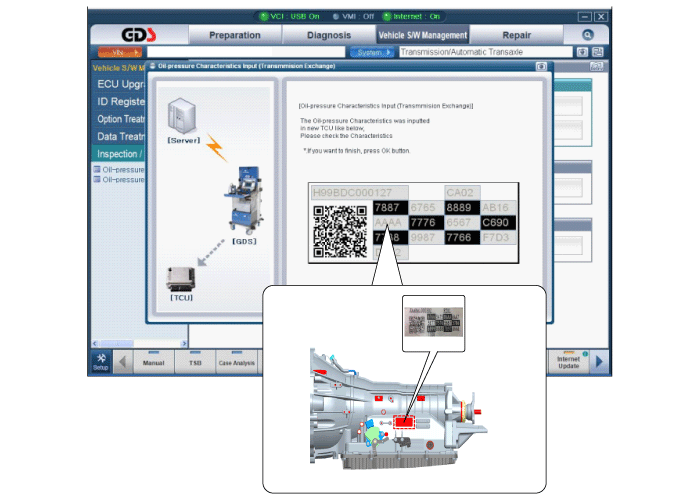 Hyundai Equus: Automatic Transmission Repair procedures
Second generation VI (2009ÔÇô2025) / Hyundai Equus VI 2009-2025 Service Manual / Automatic Transmission System (SBC) / Automatic Transmission System / Automatic Transmission Repair procedures
Hyundai Equus: Automatic Transmission Repair procedures
Second generation VI (2009ÔÇô2025) / Hyundai Equus VI 2009-2025 Service Manual / Automatic Transmission System (SBC) / Automatic Transmission System / Automatic Transmission Repair procedures
Second generation VI (2009ÔÇô2025) / Hyundai Equus VI 2009-2025 Service Manual / Automatic Transmission System (SBC) / Automatic Transmission System / Automatic Transmission Repair procedures
| Removal |
| 1. |
Disconnect (-) terminal from the battery.
|
| 2. |
Remove the under cover (A).
|
| 3. |
Remove the under cover (A).
|
| 4. |
Remove the stay (A) and (B).
|
| 5. |
Disconnect the ground wire (A) by removing the bolt.
|
| 6. |
Remove the propellar shaft assembly (A).
(Refer to "Propellar shaft" in DS group)
|
| 7. |
Remove the oil cooler tubes.
|
| 8. |
Disconnect the inhibitor switch connector (B). |
| 9. |
Remove the nut (C) and clip (D). |
| 10. |
Remove the shift cable (A).
|
| 11. |
Disconnect the solenoid valve connector (A) and the oxygen sensor connector (B).
|
| 12. |
Remove the CKP sensor (A) itself and the brackets for wire.
|
| 13. |
Remove the dust cover (A).
|
| 14. |
Remove the torque converter mounting bolts (A-6ea) by rotating the crank shaft.
|
| 15. |
Using a jack support the transmission assembly. |
| 16. |
Remove the mounting bolts (A-4ea) lower in the engine side.
|
| 17. |
Remove the mounting bolt (A-1ea, B-2ea) left in the transmission side.
|
| 18. |
Remove the cross member (A) by removing bolts.
|
| 19. |
Remove the mounting bolts (A-2ea) for the starter motor. |
| 20. |
Remove the mounting bolt (B-1ea).
|
| 21. |
Remove the mounting bolts (A-2ea) on the transmission side.
|
| 22. |
Remove the tansmission assembly by lowering the supporting jack.
|
| Installation |
| 1. |
Install in the reverse order of removal.
|
| 2. |
In case of the reinstallation.
|
| 3. |
In case of the replacing with a new automatic transaxle.
|
| 4. |
In case of the replacing with a remanufactured automatic transaxle.
|
 Automatic Transmission Components and Components Location
Automatic Transmission Components and Components Location
Components Location
1. Automatic transmission case2. Inhibitor switch3. Manual control lever4. Shift cable bracket5. Oil injection hole6. Air breather hose & pipe7. Oil injection hole (in fac ...
 Hydraulic System
Hydraulic System
...
See also:
Fuel Pressure Sensor (FPS) Repair procedures
Inspection
1.
Connect the GDS on the Data Link Connector (DLC).
2.
Check the output voltage of fuel pressure sensor (FPS).
Specification: Refer to ÔÇťSpecificationÔÇŁ
Removal
1.
Tu ...
Side repeater light bulb replacement (if equipped)
If the light bulb is not operating, have the vehicle checked by an authorized
EQUUS dealer. ...
Good driving practices
Never move the gear shift lever from P (Park) or N (Neutral) to any other
position with the accelerator pedal depressed.
Never move the gear shift lever into P (Park) when the vehicle is in mo ...
Categories
Hyundai Equus Manuals
ę 2011-2025 Copyright www.heqmanual.com


